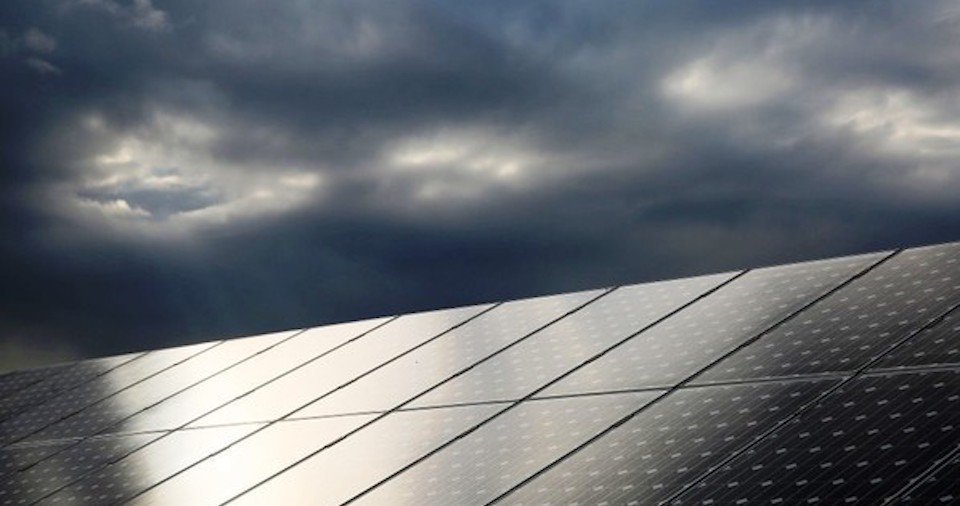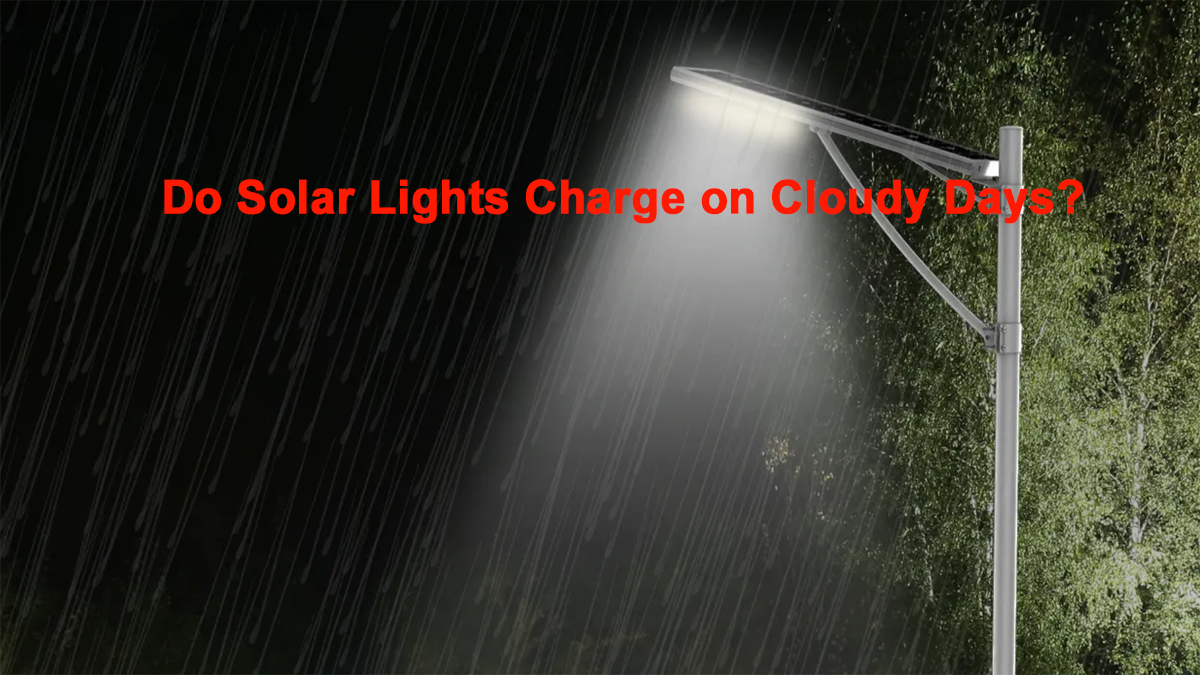Yes, solar lights work on cloudy days. They may not be as bright due to reduced sunlight.
Solar lights harness energy from the sun through photovoltaic cells, converting sunlight into electricity. Even on cloudy days, these lights can still absorb some sunlight, although the efficiency decreases. Clouds diffuse sunlight, reducing the amount of energy captured. This results in shorter illumination times and dimmer lights.
Despite this, modern solar lights are designed to store enough energy to function during overcast conditions. They come with efficient batteries and enhanced solar panels to maximize energy capture. Solar lights remain a practical and eco-friendly option for outdoor lighting, even in varying weather conditions. Investing in high-quality solar lights ensures reliable performance, irrespective of the weather.
Introduction To Solar Lights
Solar lights use the power of the sun to provide illumination. They are a great alternative to traditional electric lights. These lights are eco-friendly and cost-effective. Solar lights do not need any external power source. They are perfect for gardens, pathways, and outdoor spaces.
What Are Solar Lights?
Solar lights are devices that use solar panels to capture sunlight. They convert sunlight into electrical energy. This energy is stored in a battery. The stored energy powers the light during the night. Solar lights usually have LED bulbs. These bulbs are energy-efficient and long-lasting.
Popularity And Benefits
Solar lights are gaining popularity for many reasons. They are environmentally friendly as they use renewable energy. Solar lights help reduce carbon footprint. They are also cost-effective because they do not need electricity. Once installed, they need very little maintenance.
| Benefits | Details |
|---|---|
| Energy-efficient | Uses renewable solar energy |
| Cost-effective | No electricity bills |
| Low Maintenance | Minimal upkeep required |
| Eco-friendly | Reduces carbon footprint |
Solar lights also add aesthetic value to your home. They come in various designs. You can choose from many styles to match your decor. They provide safety and security by lighting up dark areas. Solar lights are easy to install. You do not need any wiring or special tools.
How Solar Lights Work
Solar lights are a popular choice for eco-friendly outdoor lighting. They harness sunlight and convert it into energy. Understanding how they work can help you make the most of them.
Basic Mechanism
Solar lights consist of a few key components: a solar panel, a battery, an LED light, and a controller. These parts work together to capture sunlight and convert it into usable light.
- Solar Panel: Captures sunlight and converts it into electricity.
- Battery: Stores the electricity generated by the solar panel.
- LED Light: Uses the stored electricity to produce light.
- Controller: Manages the flow of electricity between the solar panel, battery, and LED light.
Role Of Solar Panels
Solar panels are crucial for the functioning of solar lights. They are made up of photovoltaic cells. These cells absorb sunlight and convert it into electrical energy.
On cloudy days, solar panels still work. They can capture diffuse sunlight. Although the efficiency might be lower, they still generate some electricity.
| Weather Condition | Panel Efficiency |
|---|---|
| Sunny | 100% |
| Cloudy | 20-50% |
Even on cloudy days, your solar lights can still work. They might not be as bright, but they will still provide some illumination.
Solar Lights On Cloudy Days
People often wonder if solar lights work on cloudy days. Solar lights use sunlight to charge. They store energy in batteries to use at night. But what happens when there is no direct sunlight?
Performance In Low Light
Solar lights can work even in low light. They have solar panels that absorb light. Even on cloudy days, they still get some sunlight. This means they can still charge, just not as much as on sunny days.
During cloudy days, solar lights may not be as bright. They may also not last as long at night. This is because they have less stored energy. But they will still work and provide some light.
Impact Of Cloud Coverage
The impact of cloud coverage on solar lights varies. Different types of clouds can block different amounts of sunlight. Thick clouds will block more light than thin clouds. This means less energy for your solar lights.
Here’s a simple table to show the impact:
| Cloud Type | Impact on Solar Lights |
|---|---|
| Thin Clouds | Small impact, lights will still charge well. |
| Thick Clouds | Large impact, lights may charge slowly. |
| Overcast | Significant impact, minimal charging. |
Even with thick clouds, some light gets through. So, solar lights will still work but with less efficiency.

Credit: www.solaris-shop.com
Factors Affecting Solar Light Efficiency
Solar lights are popular for their eco-friendly and cost-effective benefits. But do they work on cloudy days? The efficiency of solar lights can vary. Several factors influence their performance.
Panel Quality
The quality of the solar panel is crucial. High-quality panels can absorb more light, even on cloudy days. They convert sunlight into electrical energy efficiently.
- Monocrystalline panels are the most efficient.
- Polycrystalline panels are less efficient but more affordable.
- Thin-film panels work better in low-light conditions.
Choosing the right type of panel is important. It can make a significant difference in performance.
Battery Capacity
The battery capacity of solar lights determines how long they can work. Larger batteries store more energy, providing longer illumination.
| Battery Type | Capacity |
|---|---|
| NiMH | Low to Medium |
| Lithium-ion | High |
| Lead-acid | Very High |
Using batteries with higher capacity ensures better performance. They allow the lights to work longer, even on cloudy days.
Innovations In Solar Technology
Solar technology has advanced rapidly in recent years. Innovations have made solar lights more reliable, even on cloudy days. In this section, we’ll explore key advancements in solar technology.
Advanced Solar Panels
Modern solar panels are highly efficient. They can capture sunlight even when the sky is overcast. Monocrystalline and polycrystalline panels are the most common types. Monocrystalline panels are more efficient but cost more. Polycrystalline panels are less efficient but cheaper.
Thin-film solar panels are another innovation. These panels are flexible and lightweight. They are less efficient but work better in low-light conditions. This makes them ideal for cloudy days.
Energy Storage Solutions
Energy storage is crucial for solar lights. Lithium-ion batteries are the most popular choice. They are lightweight, durable, and have a long lifespan. These batteries store energy collected during sunny periods.
Supercapacitors are also gaining popularity. They can charge and discharge quickly. This is useful for solar lights that need immediate power. Supercapacitors are more expensive but last longer than batteries.
| Type | Efficiency | Cost |
|---|---|---|
| Monocrystalline Panels | High | High |
| Polycrystalline Panels | Medium | Medium |
| Thin-Film Panels | Low | Low |
These innovations ensure that solar lights remain functional on cloudy days. Advanced solar panels and efficient energy storage solutions make this possible.
Real-world Examples
Solar lights are a great addition to any outdoor space. They harness the sun’s power to provide eco-friendly illumination. But do they work on cloudy days? Let’s explore some real-world examples to understand better.
Case Studies
Several case studies highlight the efficiency of solar lights on cloudy days. One study observed solar lights in Seattle, known for its overcast skies. The lights worked well, providing light for 8 hours each night.
Another study in London showed similar results. Despite frequent cloud cover, the solar lights functioned efficiently. The lights provided consistent illumination throughout the night.
In a rural area in Germany, solar lights were tested during winter. Even with limited sunlight, the lights operated effectively. They provided enough light for safe nighttime activities.
User Experiences
Many users have shared their experiences with solar lights on cloudy days. John from Oregon says, “My garden lights work even on the cloudiest days.” He notes that the lights last through the night.
Susan from New York reports similar satisfaction. She states, “I was skeptical at first, but my solar lights never fail. They brighten my yard even when it’s cloudy.”
Another user, Mike in Washington, shared, “I use solar lights for my driveway. They work great, rain or shine.”
A table of user ratings can provide further insights:
| User | Location | Rating (out of 5) |
|---|---|---|
| John | Oregon | 4.5 |
| Susan | New York | 5.0 |
| Mike | Washington | 4.8 |
These user experiences and case studies demonstrate the reliability of solar lights. Even on cloudy days, they provide consistent illumination. This makes them a smart choice for any outdoor space.
Maximizing Solar Light Performance
Solar lights are a great way to save energy. They work well even on cloudy days. But, their performance can be improved. This section shows how to maximize their efficiency.
Optimal Placement
Proper placement is crucial for solar lights. Ensure they get ample sunlight. Place them in areas without shade. Avoid spots with tall trees or buildings. This helps solar panels charge fully.
| Placement Tips | Benefits |
|---|---|
| South-facing spots | More sunlight exposure |
| Avoid shaded areas | Better charge efficiency |
| Open spaces | Maximum light absorption |
Regular Maintenance
Maintaining solar lights is key for their performance. Clean the panels regularly. Dust and dirt can block sunlight. Use a soft cloth to clean them.
Check the batteries often. Replace old batteries with new ones. This ensures the lights stay bright. Inspect the lights for any damage. Fix any broken parts immediately.
- Clean panels monthly
- Check and replace batteries
- Inspect for damage
Regular maintenance keeps your solar lights efficient. It also extends their lifespan.

Credit: sunvis-solar.com
Future Of Solar Lighting
The future of solar lighting is bright and promising. As technology evolves, solar lights are becoming more efficient. They can now work even on cloudy days. This advancement makes them more reliable and versatile.
Emerging Trends
Solar lighting technology is progressing rapidly. Here are some emerging trends:
- Smart Solar Lights: These lights can be controlled via smartphones.
- Energy Storage: Improved batteries store more energy for cloudy days.
- Integration with IoT: Connecting lights to the internet for better control.
- Enhanced Efficiency: New panels capture more sunlight.
Sustainable Impact
Solar lights are not just about illumination. They have a huge sustainable impact:
| Benefit | Description |
|---|---|
| Reduced Carbon Footprint | Solar lights use renewable energy, lowering greenhouse gases. |
| Energy Savings | They cut down on electricity bills, saving money and resources. |
| Minimal Maintenance | These lights need less upkeep, making them cost-effective. |
Solar lights are a step towards a greener planet. They offer a sustainable solution for our lighting needs.

Credit: solarlighting.com
Frequently Asked Questions
Do Solar Lights Work On Cloudy Days?
Yes, solar lights work on cloudy days. They store energy from sunlight, even when it’s diffused by clouds.
How Effective Are Solar Lights On Cloudy Days?
Solar lights are less effective on cloudy days but still function. They might not be as bright or last as long.
Can Solar Lights Charge Without Direct Sunlight?
Yes, solar lights can charge without direct sunlight. They absorb ambient light, though charging is slower.
Do Solar Lights Need Full Sun To Work?
Solar lights do not need full sun to work. They can still charge and operate under indirect sunlight.
What Happens To Solar Lights During Winter?
During winter, solar lights work but with reduced efficiency. Shorter days and cloudy weather affect charging.
How To Improve Solar Lights’ Performance On Cloudy Days?
To improve performance, place solar lights in the brightest spot available. Clean panels regularly for maximum efficiency.
Conclusion
Solar lights do work on cloudy days, albeit less efficiently. They still capture and store energy. Investing in quality solar lights ensures better performance in variable weather. Choose high-capacity batteries and efficient panels for optimal results. Embrace solar technology to save energy and reduce your carbon footprint, rain or shine.
